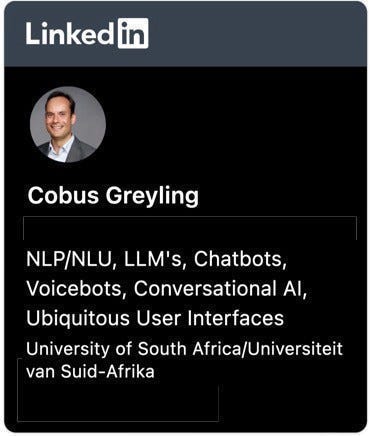Putting AI To Work
The case for a no-code AI productivity suite.
Introduction
There are a few challenges facing AI implementations currently. To mention a few, these are inference latency, data privacy and protection, rate limits, inflexible token costs, no-code access to open-sourced models and others.
Together with threats like LLM Drift, Catastrophic Forgetting, model deprecation and more.
Another challenge is the fragmented nature of the current Generative AI / Conversational AI landscape. Together with a myriad of niche products which needs to be orchestrated to form a single cohesive enterprise-grade solution.
Hence there is a market requirement to put AI to work as enterprise grade solutions, but with a focus on business growth.
Single Power Source
GALE by kore.ai is a single power source for AI implementations, consider GALE as an AI enabler for conversational AI and chatbot development frameworks.
Part of having a single AI productivity suite acting as the AI power-source for organisations is that multiple models can be orchestrated to form one generative app, or intelligent API.
Considering the image below, traditional LLMs can be added under External models. Or a whole host of Open-sourced models can be added, and easily exposed via an API.
Models can be fine-tuned where needed, via a no-code guided process. With the recent interest in purpose built open-sourced Small Language Models (SLMs) like Phi-2, Orca-2 and more, the need to host these models somewhere and expose it via an API is increasing.
Model orchestration is also possible within the AI productivity tool, hence applying models according to cost, volume, use-case and more.
Process Automation
In a recent survey on what are the best business use-cases surfaced the fact that organisations want to build Robotic Process Automation flows. A no-code user interface where generative AI and Language Models can be accessed to create different flows.
With GALE, flows are created within the productivity suite, with full access to the defined models, data functions and an advanced playground.
Being able to rapidly build a flow, and expose it as an API with defined input parameters allows organisations to automate menial tasks at scale. And integrate these automations into other existing systems, like chatbots, agent desktops and more.
Design-Time To Run-Time
Generative AI applications struggle to get from design-time to run-time. According to a recent survey, a number of impediments exist which hinders projects to leave technology incubators. Some of these impediments were mentioned in the introduction…
Via GALE, users have access to a hosted productivity suite which addressed all of the impediment of taking applications from design to production.
Another advantage of the GALE UI is that business problems can be broken down into smaller use-cases which can be addressed individually without costly and risky big-bang approaches.
In Conclusion
Moving AI projects from the design phase to production involves several key steps.
Firstly, it’s crucial to ensure that the AI model is trained on relevant and representative data to maximise its accuracy and effectiveness in real-world scenarios.
Once the model is trained, it needs to be integrated into the existing infrastructure or systems within the organisation, ensuring compatibility and scalability. Comprehensive testing and validation procedures must be conducted to assess the model’s performance and identify any potential issues or areas for improvement before deployment.
Following successful testing, deploying the AI model into production involves setting up monitoring mechanisms to track its performance, address any emerging issues, and continuously refine the model over time to maintain its relevance and effectiveness.
Finally, ongoing maintenance and support are essential to ensure the AI system continues to meet the organisation’s objectives and evolves alongside changing business requirements and technological advancements.
All of these principles were key design considerations in the creation of GALE.
⭐️ Follow me on LinkedIn for updates on Large Language Models ⭐️
I’m currently the Chief Evangelist @ Kore AI. I explore & write about all things at the intersection of AI & language; ranging from LLMs, Chatbots, Voicebots, Development Frameworks, Data-Centric latent spaces & more.







Agree on the huge potential of LCAP AI-1st offering. GALE looks promising assuming they integrate with most common LLMs and have data connectors to CRM for instance. I think PROD monitoring and fine-tuning is as (or more) important than the design phase. Eventually business leaders will be measured on ROI.